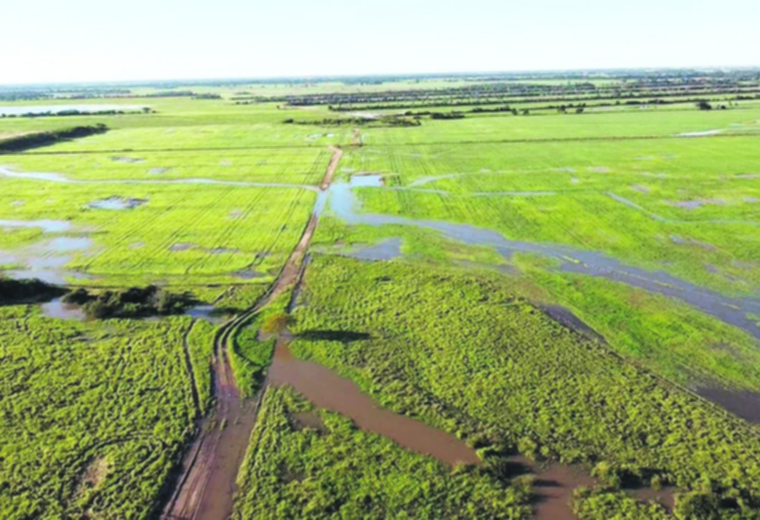June 21, 2023, 4:00 AM
June 21, 2023, 4:00 AM
The climatic events associated with floods and frosts and the clandestine entry of grains through border crossings with Argentina, weaken the cultivated production of winter grains (wheat, sorghum, sunflower and corn). The Association of Producers of Oilseeds and Wheat (Anapo) estimates 50,000 hectares of affected crops and losses due to flooding of agricultural fields in Cuatro Cañadas and Okinawa, both municipalities large wheat producers. Both populations were impacted by extraordinary rains recorded last week.
According to the general manager of Anapo, Jaime Hernández, a preliminary technical evaluation estimates nearly 50,000 affected hectares and losses, although he stated that we will have to wait for the waters to subside in the fields in order to have a final count of damages, both productive and economic. .
He described that, of the approximately 50,000 hectares, between affected and lost, the most affected crop is wheat (25,000 hectares), followed by sorghum (15,000 hectares) and then sunflower (5,000 hectares). “The economic loss has not yet been quantified because we must wait for the waters to subside to establish the final damage in hectares and by crops,” Hernández said.
According to the president of the Eastern Agricultural Chamber (CAO), José Luis Farah, A partial sectoral balance in the productive area is estimated to affect more than 40,000 hectares of winter crops. He externalized that the rains left the fields flooded and flooded and the secondary roads in poor condition, which limits the cutting and storage of cane in the sugar mills that operate in the north of Santa Cruz. “The sugarcane harvest is delayed because there is not enough raw material to grind,” he exclaimed.
In the case of corn, Farah said that the state of the situation in this sector is worrisome due to two factors, the climate that affects the decline in production and smuggling that slows down the expansion of the agricultural frontier. He estimates that, Of the 170,000 cultivated hectares in the department, 25 to 30% cannot be recovered or harvested due to weather conditions. In the same proportion, a deficit of the yellow grain is foreseen, which is -he said- essential in the food security of the livestock sectors of Santa Cruz and the rest of the country’s regions.
The president of the Agricultural Chamber of Small Producers of the East (Cappo), Isidoro Barrientos, I calculate some 45,000 hectares of wheat compromised by the flooding and stagnation. Yesterday, he clarified that they are waiting for the full authorization of the neighborhood roads in Cuatro Cañadas and for the water level to drop in the chacos to face a technical evaluation and thus quantify and accurately determine the impact and losses in crops.
Over the weekend, quoted in the state news agency ABI, the Minister of Rural Development and Land, Remmy Gonzales, affirmed that the floods in Santa Cruz and the frosts in Chuquisaca, Cochabamba and Tarija have so far affected 24,500 hectares of different agricultural crops. .
In the case of Santa Cruz, the authority explained that the floods inundated approximately 18,000 hectares of crops sorghum, sunflower, wheat and sugar cane. According to the Early Warning evaluations of said ministry, the frosts reported in Chuquisaca, Cochabamba, Tarija and in the area of the Santa Cruz valleys affected some 6,500 hectares.
According to the note, the government is preparing a plan to save wheat production in the municipalities of Cuatro Cañadas, Okinawa, San Julián and El Puente de Santa Cruz, for which work is being done on quantification with the technical personnel posted in these areas.
The report of the Departmental Emergency Operations Center (COED), dependent on the Government of Santa Cruz, With information generated by the municipalities affected by flooding, it shows that in municipalities of the Santa Cruz valleys crops were affected of corn, cucumber, potato, paprika, wheat and pastures in high areas.
Likewise, it was broken down that in the municipalities of Cuatro Cañadas and Okinawa an affectation of 12,000 hectares of wheat, soybeans, sorghum, cane and pasture was quantified.
















